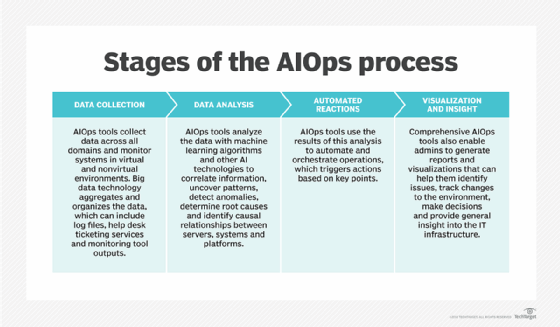You still can get an argument about whether the primary purpose of AIOps is insight or action, but all agree inferences and insight are essential to the value proposition.
Gartner predicts larger enterprises’ use of AIOps and digital experience monitoring tools for monitoring applications and infrastructure will rise from five percent in 2018 to 30 percent in 2023.
The AIOps analytics market represented sales of about $2 billion in 2016, according to IDC.
Automation, which is critical to running AIOps smoothly and efficiently, helps drive AIOps to perform, according to CIO:
Automated monitoring: discover the full environment and identify when new endpoints, such as a virtual server or machine, a new mobile device, or even a new cloud platform, are brought up
Automated AIOps: run AIOps while adhering to established policies and dependency mapping and requiring no advance configuration
Automated remediation: quickly and efficiently execute the necessary steps to resolve any fault or performance events
AIOps helps enterprises consolidate and analyze infrastructure operational data coming at them at a rapidly increasing pace from myriad sources, says Micro Focus.
It can reduce the overall volume of potentially damaging events, provide alerts to conditions that could cause an outage, isolate the cause of those events, and apply process automation to remediate events, Micro Focus argues.
